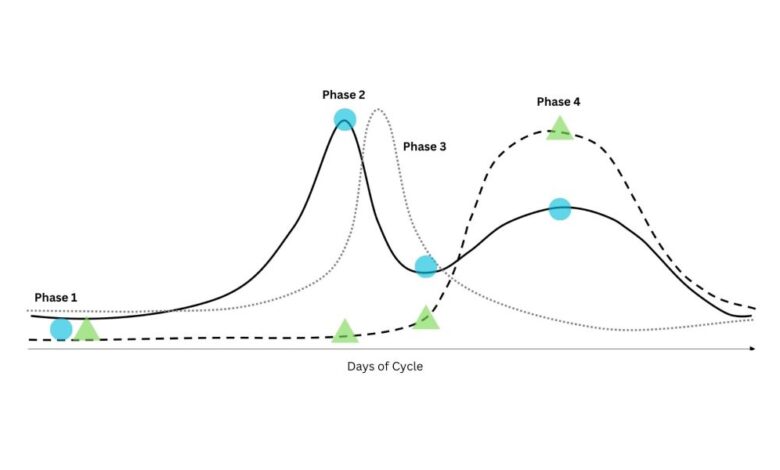How Hormone Cycles Shape Training and Competition

While often seen as the pinnacle of good physical health, many male athletes struggle with a hormonal imbalance. That is especially the case when it comes to low testosterone levels. To appreciate why this is so concerning, it helps to know more about this all-important hormone.
What Is Testosterone?
Essentially, testosterone is the primary male sex hormone and androgen in men, and it plays a critical role in a plurality of bodily functions. Some of these include promoting muscle growth and strength, maintaining strong bones, stimulating red blood cell production, and regulating libido and sperm production.
A hormonal deficiency in the form of low testosterone can disrupt many of these functions, and for athletes, those disruptions can impact their physical performance.
How Common Is Low Testosterone in Men?
According to a study published by the Department of Urology at the University of North Carolina, hypogonadism, also known as low testosterone, affects around 40% of men aged 45 and over. Of course, the onset of low testosterone doesn’t always start in middle age. Younger men, especially those who play sports, can suffer from low blood testosterone levels.
A separate study from ResearchGate found that 16.5% of male athletes have low testosterone levels that are below normal. For reference, normal, healthy testosterone levels for men are between 300 and 1,000 nanograms per deciliter (ng/dL) or 10 to 35 nanomoles per liter (nmol/L). Common causes of hypogonadism among male athletes include the following:
- Chronic stress
- Not consuming enough calories
- Overtraining
- Sleep apnea
- Taking certain medications, namely opioids and steroids
Male athletes living with certain medical conditions are also at risk of suffering from a testosterone deficiency. Some of these medical conditions include Klinefelter syndrome, which negatively affects testicular development and function, and pituitary or hypothalamic disorders, both of which can interfere with the brain’s ability to send signals to the testicles to secrete and release testosterone into the bloodstream.
Common Signs of Low Testosterone Levels in Men
When testosterone levels in men dip too low, it can open the door to a wide range of physical and even psychological symptoms. Some of the more widely reported ones include erectile dysfunction (ED), infertility, shrunken testicles, and low sperm count. The following are also quite common:
- Anxiety and depression
- Chronic fatigue
- Difficulty focusing or concentrating
- Elevated blood cholesterol levels
- Gynecomastia
- Insomnia
- Irregular heartbeat
- Memory problems
- Paresthesia
- Reduced bone density or osteoporosis
- Reduced muscle mass and strength
- Thinning hair
- Weight gain
How Testosterone Cycles Shape Training And Competition
Testosterone cycles influence training and competition by creating a neurobiological loop, a feedback system that helps improve focus, drive, and assertiveness. These same neurological loops also contribute to strength gains and speeding up muscle repair and recovery.
All of these can benefit athletes who take part in resistance training and high-intensity interval training (HIIT). Studies show that resistance training and HIIT, both of which are mainstays in sports training, can trigger transient increases in testosterone levels in male athletes.
The long and short of it is that neurological loops and transient increases in testosterone brought on by resistance training and HITT give male athletes a competitive edge when it comes to training for and playing their respective sports.
Understanding Natural Male Testosterone Cycles
Natural testosterone cycles refer to the natural fluctuation of testosterone that occurs in the male body over 24 hours. Bearing that in mind, the testes and the adrenal glands secrete most of the testosterone men need while they are asleep. That is why their testosterone levels are usually the highest in the morning. But throughout the day, those high testosterone levels gradually decrease, often falling to their lowest points in the afternoon or early evening.
Men with a testosterone deficiency don’t experience these fluctuations in testosterone. Their testosterone levels remain low irrespective of the time of day. But that doesn’t mean they have to live a life delineated by low testosterone and related symptoms. Studies show that getting plenty of sleep each night, staying hydrated, consuming a well-balanced diet, and exercising regularly can help boost low testosterone naturally.
Another option for boosting low testosterone levels entails buying testosterone cypionate and taking it as prescribed by a physician. Also known as testosterone replacement therapy (TRT) or Depo-Testosterone, testosterone cypionate is an injectable medication approved by the FDA to boost low testosterone in men. Most men experience an increase in their testosterone levels and relief from deficiency-related symptoms within 3 to 6 weeks of starting a testosterone cypionate regimen.
To summarize, adequate testosterone levels benefit male athletes and men in general in many ways, but a testosterone deficiency can have a polar opposite effect. Fortunately, there are many medicinal and all-natural ways to ramp up testosterone production in the male body.


